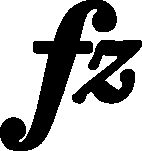



|
b. 238
|
composition: Op. 19, Bolero
..
We suggest adding category imprint: Differences between sources; Editorial revisions |
|||||
|
b. 238
|
composition: Op. 11, Concerto in E minor, Mvt I
..
GE3 overlooked the tie to d category imprint: Differences between sources issues: Errors in GE |
|||||
|
b. 238-239
|
composition: Op. 11, Concerto in E minor, Mvt I
..
The absence of the tie to B is most probably an oversight of the engraver of GE, cf. the slurs in analogous bars 242-243 and 589-590 and 593-594. category imprint: Differences between sources issues: Errors in GE |
|||||
|
b. 238
|
composition: Op. 11, Concerto in E minor, Mvt I
..
The inaccurate slur of FE was interpreted in GE as running from the 3rd crotchet in the bar, which is certainly erroneous, since in all 3 analogous places, the slur begins from the 2nd crotchet, with the entrance of the phrase led in octaves. category imprint: Graphic ambiguousness; Differences between sources issues: EE revisions , Inaccuracies in GE , Inaccuracies in FE |
|||||
|
b. 238
|
composition: Op. 16, Rondo in E♭ major
..
In GE, the engraver overlooked the tie of the small a category imprint: Differences between sources issues: Errors in GE |



 ] suggested by the editors
] suggested by the editors 1.
1.




 1 tied in
1 tied in 